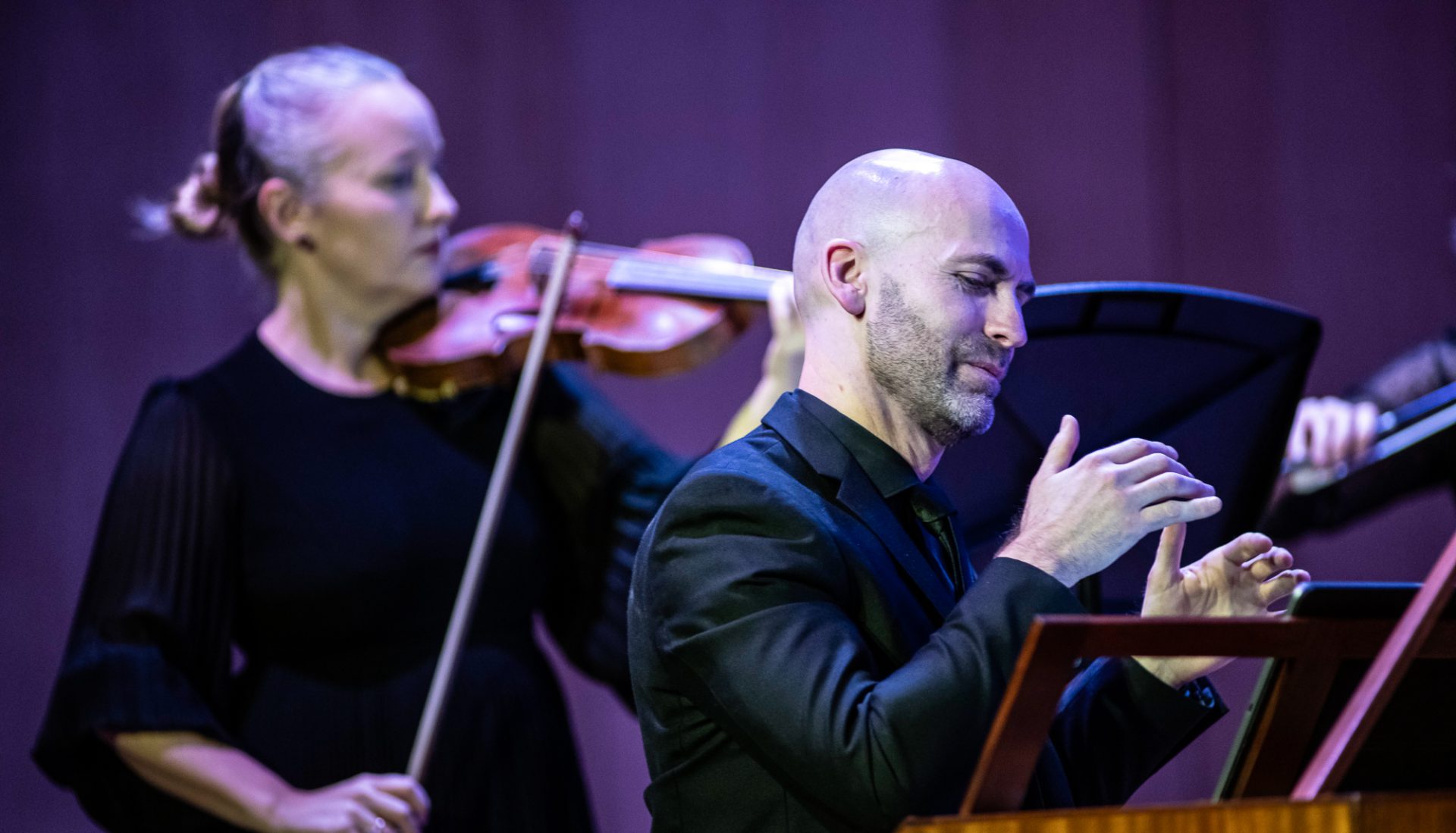Helyard joins AHE for a celebration of Mozart.
This concert was preceded some weeks earlier by a lecture in the State Library’s “Friend’s Room” on the topic of Mozart in Salzburg given by Anthony Abouhamad on harpsichord and Skye McIntosh on violin. Abouhamad did his doctoral thesis on that topic. He performed works by CPE Bach and by a young Mozart, followed by the delightful Violin Sonata in E minor K 304.
In the concert proper, the Australian Haydn Ensemble was joined by Erin Helyard on fortepiano. That combination follows from their earlier concerts, “Mozart’s Prague” in 2021 and “Tempora Mutantur” in 2020.
Their second performance (after a performance in Canberra’s National Gallery of Australia) was held in Bowral’s Memorial Hall – a cosy auditorium with considerable seating capacity and a raised dais which showcased the fortepiano in all its glory. It gave the impression of a small salon, which is precisely the environment in which the music of the young Mozart thrived.
It was just as well that the concert began, sans fortepiano, with the Mozart’s String Quintet No. 1 in B-flat major K. 174. This is music that sets out not to be too conspicuous. It fits comfortably with the pleasant divertimenti which were so common in Mozart’s day. Skye McIntosh took charge in the opening movement. The following, slow, movement shows the precocious teen’s mastery of harmonic development on a bassline revealed later by Daniel Yeadon on cello. Even the lively closing movement retains this quintet’s key characteristics – polite and gentle. Quick passages are tossed swiftly between McIntosh and Anna McMichael, Nicole Divall on viola, and even Yeadon.
Then came Helyard’s own transcription of Mozart’s Piano Concerto No 11 in F major K. 413. The concerto is distinguished by a confident and restless momentum. But Erin’s performance was a model of restrained graced. Restraint. Grace. The twin paragons of the Classical idea. His trills were firm, but never motoric. He made extensive use of the distinctively silvery buzz of the bass on the fortepiano. And he imbued a sense of humour into the closing cadenzas of each movement.
Helyard returned after the interval, alone, with Mozart’s Piano Sonata in B-flat major K. 333. Gustav Leonhardt’s vinyl recording in 1973 of this sonata on fortepiano is unmatched. Helyard’s performance approached this delightful masterpiece with a similar intellectual humility. That is not to say that he did not impress his own character onto it. The knee-pedals (an unfortunate contradiction in terms) were tastefully deployed to make descending passages wash over the audience, interrupted only by terse staccato. The closing movement is structured as though it were a concerto, and even features something of its own closing cadenza. Each iteration of the theme became terser, until we are lulled into a pianissimo false denouement only to be shocked with a terse ending.
The symphony was everything the string quintet was not. It demanded attention. The first few chords say so. One would be forgiven for thinking it were the opening to a Haydn symphony.
